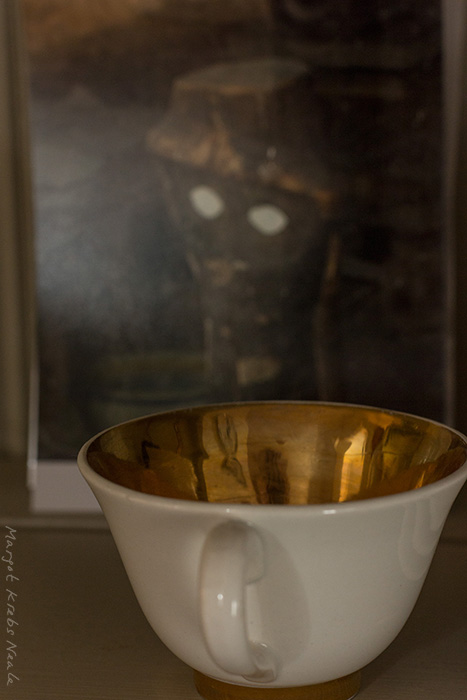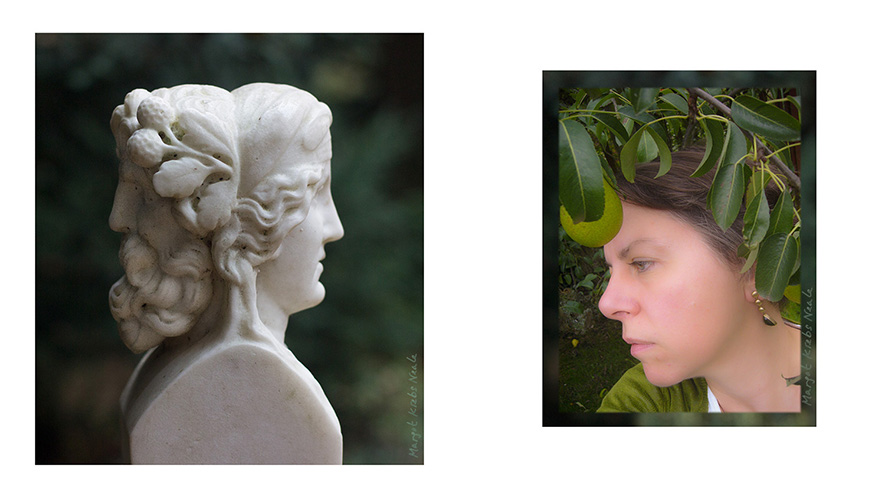My first response to the theme of the exhibition was a blurb book with the story of my life. Being a woman was being me. Then I thought that was too narrow and too personal, so I looked for poems I had written which dealt with the women who had influenced me or been important to me and my role in womanly aspects of my life, motherhood, sisterhood. Later I wrote a poem specifically for the exhibition and what came to light was more a question, when do we have an idea about womanly or manly? Is it a subtle changing idea, can one be “just woman”?
No answer to this question, just images. Following a pattern similar to Paul Gauguin’s questions and title “D’où venons-nous ? Que sommes-nous ? Où allons-nous ?” (Where Do We Come From? What Are We? Where Are We Going?).
The first picture is “what was my face like before I was born” a time when no one knew my gender, a time when I wonder what my face was like.
To the second question “Que sommes-nous?” (what are we?) the response would be “Gold and Mine (2013)” : in the foreground a cup, a vessel and in the background eyes and mystery, like the relationship between the unconscious and what we try to offer to the world. The depth mined for gold.
A response less mysterious but not without its ambiguities is “Manly, Womanly and Me (2013)”. Behind the image of me, what image of masculinity and femininity was I given by my parents?. Mars, Venus, Saturn, Artemis, so many ways to weave the masculine and feminine.
“Flots de Mots (2014)” is not an image, it is a river, with a source and a powerful flow, like the words pouring out in writing, in attempts to give shape to uncertainties and discoveries, answers and new questions and maybe help say something about where we are going, and that may be back to the source.
Flots de Mots (2014)
This photograph is of THE RIVER, an installation by the artist Charles Sandison commissioned by the musée du quai Branly. It is a work of spectacular video art. Immersed in a river of words that are moving, generated by a network of computers, and projected at varying rhythms and densities for the whole length of the route, visitors will encounter the names of all the peoples and geographic places represented in the museum’s collections. In this way, THE RIVER goes along with the flow of visitors as they ascend right to the source: the collections floor.
… polynésie ravenna slavonska narabat miguel puno nek papantia creuse dogon rajbari nicolas pequetzen rapa pitcalm foukhar botswana pitcairn lipez putau rachaya magdalena santa oblysy sepik san luis piedras quijarro rangamati …













